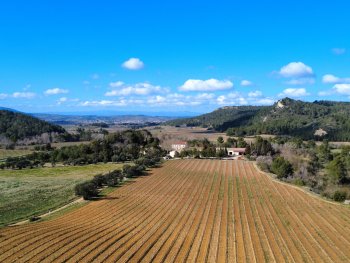First conclusive results on agrivoltaics in France
ines thrive under the shade afforded by photovoltaic panels according to preliminary results thrown up by the pilot site in Piolenc, Vaucluse, in the Rhone Valley. Out of 1,000 m2 of vines planted to Grenache noir, 600 m2 were covered with solar panels developed by Sun'Agri. Controlled using algorithms tailored to the plant's needs, the panels tilt depending on the vines’ sunshine or shade requirements. When the shade reaches its maximum level, the panels cover 66% of the surface area. They are placed 4.20 m above the ground, allowing the harvesting machine to pass through. On half of the area, the panels provided total shade until 1 p.m., then maximum shade for the rest of the day. On the other half, the total shade from the panels was maintained throughout the day until veraison, when the first system was applied. On the rest of the plot, Grenache with no solar protection acted as a control site. Experimental monitoring was carried out by the Chamber of Agriculture, in partnership with IFV and INRAE.
The results reveal that the vines sheltered by the dynamic agrivoltaic system showed better resistance to high summer temperatures than the others: growth stunting was observed 6 to 13 days later on the shaded vines compared to the unprotected control vines. Water stress, measured with the help of sensors, was lower in the shaded vines - the reduction in water requirements varied from 12 to 34% depending on the systems. Shading also had a positive effect on berry weight, which was 17% higher for the protected vines. Similarly, it also had a beneficial effect on the organoleptic quality of the wines. Anthocyanin content was higher (+13%), as was total acidity (+9 to +14% depending on the method). Conversely, alcohol strength remained at the same level in shaded plots and the control vineyard.







